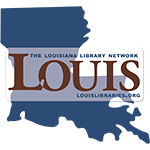General Biology II Lecture + Lab (Science Majors)
Topic outline
-
Welcome to Biology II for Science majors!
Course Introduction
This course is designed for students majoring in science or a related field. A systematic study of the structure, function, ecology and evolution or organisms including bacteria, protists, fungi, plants and animals.Upon successful completion of this course, the student will be able to:
- Apply biological concepts to the natural world and society
- Recognize biology as an inquiry process dependent on the scientific method and requiring critical thinking
- Interpret biological images, scientific graphs and models used to illustrate general biology concepts
- Demonstrate biological literacy through the use of standard English and appropriae citation of outside resources.
- Recognize fundamental biology principles in the areas of evolution, biological diversity, ecology, microorganisms, and anatomy and physiology of organisms.
Adopting institution should provide learners information on how to navigate the course. Consider adding an introductory navigation video. Text description could include, for example:Navigating the Course
This course is set up in Modules covering various topics which may be accessed from the course navigation menu on the left or by scrolling below. Modules may be collapsed in the menu and it the body of the course to minimize scrolling. Each module includes the relevant chapters followed by various activities, which may include discussion forums, listening activities and quizzes, practice quizzes, module tests, and other relevant activities as appropriate for each module. Many items are required and may be marked as completed automatically when the activity has been submitted (the broken check box), but others will marked as done by the student (the solid check box).Please move through the items below and continue through the Learner Support and Getting Started modules before moving on to Module 1. Be sure to check for announcements and due dates to stay on track.
 This course and its contents are licensed under a Creative Commons Attribution 4.0 International License by LOUIS: The Louisiana Library Network, except where otherwise noted.
This course and its contents are licensed under a Creative Commons Attribution 4.0 International License by LOUIS: The Louisiana Library Network, except where otherwise noted. -
This module contains all the items you should review and complete before you begin Module 1. Before moving on, be sure to:
- Check the News and Announcements Forum
- Read the Course Syllabus
- Review Grading Rubrics: Research paper rubric, Discussion rubric.
- Introduce yourself to the class
- Read the instructions for the Q & A Forum
Good luck in the course!-
Use this forum to tell us a little about yourself and your interests. Some topic ideas:
- What is your field of study/research interest or concentration?
- What are you most interested in learning about in this class and why?
- Have you ever taken an online class before?
- Any other information you would like to share with your classmates, such as special interests or activities.
Post a picture! We look forward to meeting you.
-
Use this forum to ask your instructor any questions you have about the course. You may post at any time, and your instructor will respond here. Be as specific as possible.
Please keep in mind that others can see your posts, so do not post any personal information. If you have questions about your grade, please email your instructor directly. You can expect a response to posts and emails within 24 hours M-F, next business day on weekends.
- Check the News and Announcements Forum
-
Use the information in this module to customize the template to your needs. This module is currently hidden from students, and available for you to refer to throughout the semester.
-
Image from Biology 2e from OpenStax, licensed under Creative Commons Attribution License v4.0 with the image credit
The tobacco mosaic virus, seen here by transmission electron microscopy (left), was the first virus to be discovered. The virus causes disease in tobacco and other plants, such as the orchid (right). (credit a: USDA ARS; credit b: modification of work by USDA Forest Service, Department of Plant Pathology Archive North Carolina State University; scale-bar data from Matt Russell)
In these chapters you will be covering topics about viruses, bacteria, and archaea.
Note the check boxes to the right that help you track your progress: some are automatic, and some are manual.
Course Outcomes:
- Apply biological concepts to the natural world and society
- Recognize biology as an inquiry process dependent on the scientific method and requiring critical thinking
- Interpret biological images, scientific graphs and models used to illustrate general biology concepts
- Demonstrate biological literacy through the use of standard English and appropriate citation of outside resources
- Recognize fundamental biology principles in the areas of evolution, biological diversity, ecology, microorganism, and anatomy and physiology of organisms.
Objectives: Viruses and Prokaryotes- Describe the different structures found in viruses
- Explain viral replication
- Distinguish between lytic and lysogenic cycles in baceriophages
- Identify the major viral diseases that affect humans
- Describe the types of vaccinations and anti-viral humans
- Describe the basic features of bacteria and archaea
- Identify the different structures and their functions of a typical prokaryote
- Explain the differences between gram-positive and gram-negative bacterial cells
- Identify bacterial diseases that caused historically important plagues and epidemics and current diseases caused by bacteria
- Explain how overuse of antibiotics may be creating "super bugs".
Lab Safety and Viruses Objectives- Preform safe methods in the labs
- Use safety techniques and be able to identify which ones to use for a specific experiment
- Define virus
- Describe the anatomical features and shape of a typical virus
- Compare and contrast enveloped and naked viruses, and lytic and lysogenic viruses
- Draw and label a typical bacteriophage
- Name significant families of viruses and the disease they cause
- Describe how a disease can be transmitted in a population
-
Many species of fungus produce the familiar mushroom (a) which is a reproductive structure. This (b) coral fungus displays brightly colored fruiting bodies. This electron micrograph shows (c) the spore-bearing structures of Aspergillus, a type of toxic fungus found mostly in soil and plants. (credit “mushroom”: modification of work by Chris Wee; credit “coral fungus”: modification of work by Cory Zanker; credit “Aspergillus”: modification of work by Janice Haney Carr, Robert Simmons, CDC; scale-bar data from Matt Russell)
Upon completion of this module, you will be able to:- List the unifying characteristics of eukaryotes
- Explain endosymbiotic theory
- Identify the structures, including locomotion, of the different types of protists
- Describe important pathogenic species of protists
- List the characteristics of fungi
- Describe the mode of nutrition of fungi
- Describe the role of fungi in the ecosystem and in the food and beverage preparation
- Describe the different types of fungal infections in humans
- Read Chapter 5
- Read the Power point on Protist
- Read Chapter 6
- Read the Power point on Fungi
Complete all of the questions and activities in the chapters
Lab Objectives Protist Lab:
- Describe the general characteristics of the protists
- Discuss why protists present a unique problem of taxonomists
- Compare and contrast traditional and modern protist classification
- Describe the traditional organization of the plant-like protists
- Describe the basic biology of the plantlike protists
- Describe the traditional organization of the fungus-like protinst
- Describe the basic biology of the fungus-like protists
- Descrbie the traditional organization of the animallike protists
- Explain the ecological role and characteristics of kingdom Fungi
- Describe and identify the basic anatomical features of kindom Fungi
- Discuss the taxonomical organization of kingdom Fungi
- Describe the characteristics of and biolgy of phyla Chrytridiomycota, Aygomycota, Glomeromycota, Ascomycota, and Basidiomycota
- Trace the life cycle of Rhizopus stolonifer, a typical ascomycete, and Agaricus bisprous, a typical basidiomycele
- Label the parts of a typical mushrooom
- Describe the biology of lichens and their three basic forms
-
Nearly 97 percent of animal species are invertebrates, including this sea star (Novodinia antillensis). Image from Biology 2e from OpenStax, licensed under Creative Commons Attribution License v4.0 with the image credit: NOAA’s National Ocean ServiceUpon completion of this module, you will be able to:1. Name and identify different invertebrate models2. Describe and provide examples of sponges and cnidarians3. Describe and provide examples of lophotrochozoans and ecdysozoans4. Describe and provide examples of echinoderms and chordates
To achieve these objectives:
- Read the Module 4 Introduction
- Read and view the materials in the Module 4 Pressbooks book
- Read Chapter #8
- Complete the end of the chapter reading questions and review the PowerPoint
Module Pressbooks Resources and Activities
You will find the following resources and activities in this module at the Pressbooks website. Click on the links below to access or complete each item.
-
This laboratory activity is from an OER Resource. In this laboratory, we will dive deeper into the animal world and learn about some of the organisms that are vertebrates. Animals that belong to the Phylum Chordata, Subphylum Vertebrata (from the Latin word vertebratus, which means 'jointed'), in addition to the notochord, pharyngeal gill slits, a dorsal hollow nerve cord, and a post-anal tail possess a backbone or vertebral column.
At the lab manual link, navigate to the "Lab Exercise: Animals II - Vertebrates Dmitry Brogun, Ph.D." beginning on page 151.
- Read the Module 4 Introduction
-
 Vertebrates are among the most recognizable organisms of the Animal Kingdom, and more than 62,000 vertebrate species have been identified. The vertebrate species now living represent only a small portion of the vertebrates that have existed in the past. (Image from Biology 2e from OpenStax, licensed under Creative Commons Attribution License v4.0 with the image credit a: modification of work by Dave Pape; credit b: modification of work by Dave Proffer; credit c: modification of work by Haui Ared).Upon completion of this module, you will be able to:
Vertebrates are among the most recognizable organisms of the Animal Kingdom, and more than 62,000 vertebrate species have been identified. The vertebrate species now living represent only a small portion of the vertebrates that have existed in the past. (Image from Biology 2e from OpenStax, licensed under Creative Commons Attribution License v4.0 with the image credit a: modification of work by Dave Pape; credit b: modification of work by Dave Proffer; credit c: modification of work by Haui Ared).Upon completion of this module, you will be able to:- Describe the distinguishing characteristics of chordates.
- Describe the developmental fate of the notochord in vertebrates.
- Describe the difference between jawless and jawed fishes.
- Discuss the distinguishing features of sharks and rays compared to modern fishes.
- Describe the important difference between the life cycle of amphibians and the life cycles of other vertebrates
- Describe the main characteristics of amniotes
- Identify the characteristics of reptiles
- Describe the evolutionary history of birds
- Describe the derived characteristics in birds that facilitate flight
- Name and describe the distinguishing features of the three main groups of mammals
- Describe the derived features that distinguish primates from other animals
- Explain why scientists are having difficulty determining the true lines of descent in hominids
To achieve these objectives: [Edit these items to match your resources and activities.]
- Read the Module 3 Introduction
- Read and view the materials in the Module Pressbooks book
- Read Chapter # in Textbook Title, Article Title, etc.
[Include all reading assignments here that are outside of Moodle. Be as
concise as possible. More information can be included in the
third-party section below, if necessary.]
- Complete the [Learning Objectives in each section of the chapter and submit them to the assignment Due link]
Module Pressbooks Resources and Activities
You will find the following resources and activities in this module on the Pressbooks website. Click on the links below to access or complete each item.
-
This link provides you with access to lecture notes for General Biology II. This is a complete lecture note series. These lecture notes were licensed under the Creative Commons Attribution-ShareAlike 3.0 Unported license. This is an ancillary tool to assist you. These lecture notes are not associated with the General Biology 2E Pressbook. Should you have any questions, please contact your instructor.

-
Instructions
Complete the Learning Objectives in each section of Chapter 9. These objectives should be completed as an MS Word document and submitted in this link by the due dates outlined in your course syllabus. Please make sure you save the document as: i.e. (Module 3: Chapter 9 Learning Objectives, etc..)
Additionally, please make sure that you complete the Review Questions and Critical Thinking sections located in Chapter 9 in Pressbooks.
-
This laboratory activity is from an OER Resource. In this laboratory, we will dive deeper into the animal world and learn about some of the organisms that are vertebrates. Animals that belong to the Phylum Chordata, Subphylum Vertebrata (from the Latin word vertebratus, which means 'jointed'), in addition to the notochord, pharyngeal gill slits, a dorsal hollow nerve cord, and a post-anal tail possess a backbone or vertebral column.
This is the Lab Exercise: Animals II - Vertebrates from the CUNY General Biology Laboratory Manual.
- Describe the distinguishing characteristics of chordates.
-
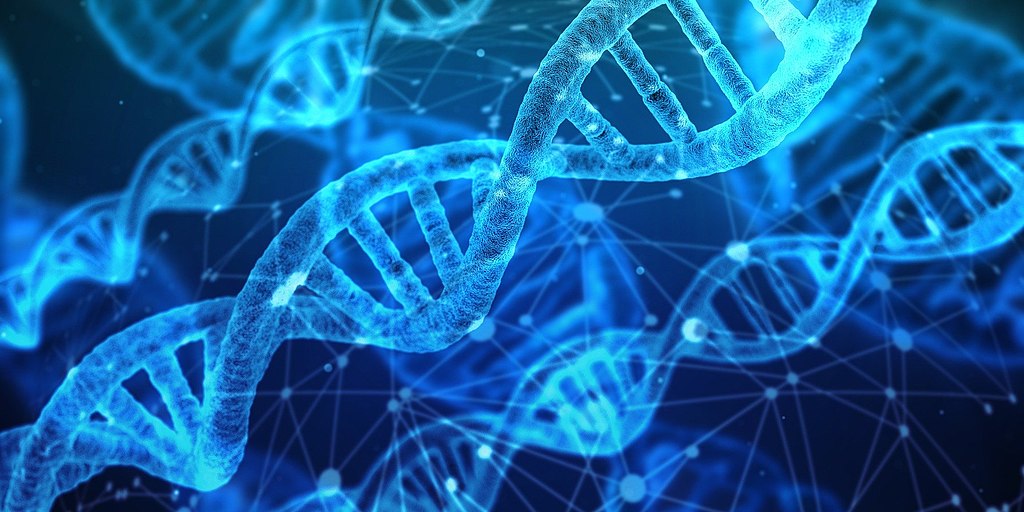
In this module you will take your midterm exam and submit your midterm assessment for this course. Read the instructions carefully and take note of any special submission guidelines.
FUTURE INSTRUCTORS WILL ADD CONTENT
Upon completion of this module, you will have:
- Read and viewed the instructions.
- Scheduled your exam with the proctoring service.
- Prepared for and submitted your midterm assessment.
To achieve these objectives:
- Read and view the contents of "Exam Information and Instructions".
- Review the exam guidelines in your syllabus to make sure you are ready. Click on link and follow the instructions.
- Log in to the proctoring service and take your exam.
-
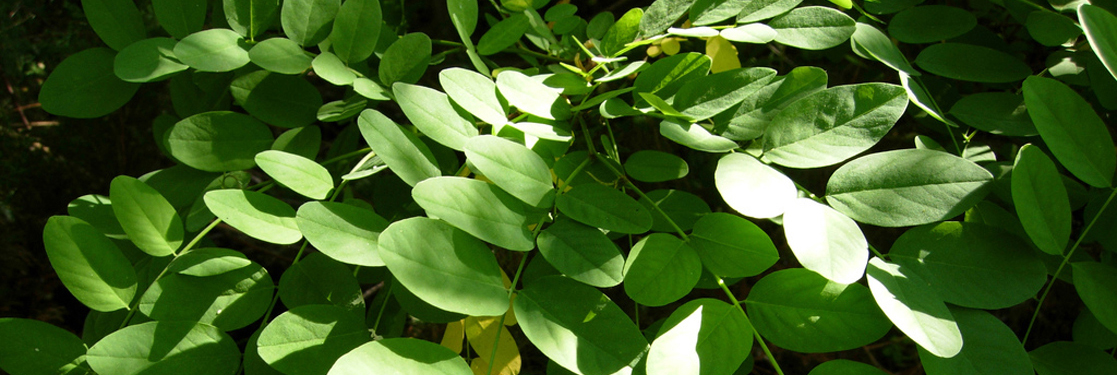
A locust leaf consists of leaflets arrayed along a central midrib. Each leaflet is a complex photosynthetic machine, exquisitely adapted to capture sunlight and carbon dioxide. An intricate vascular system supplies the leaf with water and minerals and exports the products of photosynthesis. Image from Biology 2e from OpenStax, licensed under Creative Commons Attribution License v4.0 with the image credit: modification of work by Todd Petit
Upon completion of this module, you will be able to:1. Describe the organizational hierarchy of plants (organs, tissues, and cells)2. Describe primary and secondary growth in plants3. Describe how growth, morphogenesis, and cell differentiation help to produce the plant bodyTo achieve these objectives:
- Read the Module 5 Introduction
- Read and view the materials in the Module 5 Pressbooks book
- Read Chapter #10
- Complete the questions in each chapter section
Module Pressbooks Resources and Activities
You will find the following resources and activities in this module at the Pressbooks website. Click on the links below to access or complete each item.
-
-
This laboratory activity is from an OER Resource. In this laboratory, we will dive deeper into the animal world and learn about some of the organisms that are vertebrates. Animals that belong to the Phylum Chordata, Subphylum Vertebrata (from the Latin word vertebratus, which means 'jointed'), in addition to the notochord, pharyngeal gill slits, a dorsal hollow nerve cord, and a post-anal tail possess a backbone or vertebral column.
- Read the Module 5 Introduction
-
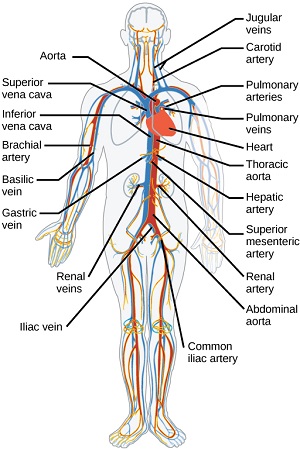 In this module, students will learn about the anatomy and physiology of the respiratory and circulatory systems. Differences and similarities will be discussed as these systems are explored in humans and in other organisms as well.
In this module, students will learn about the anatomy and physiology of the respiratory and circulatory systems. Differences and similarities will be discussed as these systems are explored in humans and in other organisms as well.The primary function of the respiratory system is to deliver oxygen to the cells of the body’s tissues and remove carbon dioxide, a cell waste product. The main structures of the human respiratory system are the nasal cavity, the trachea, and lungs.
The circulatory system is effectively a network of cylindrical vessels: the arteries, veins, and capillaries that emanate from a pump, the heart.
In all animals, except a few simple types, the circulatory system is used to transport nutrients and gases through the body. The circulatory system varies from simple systems in invertebrates to more complex systems in vertebrates.
Image from Biology 2e from OpenStax, licensed under Creative Commons Attribution License v4.0 with the image credit modification of work by Mariana Ruiz Villareal
Upon completion of this module, you will be able to:- Describe the passage of air from the outside environment to the lungs
- Explain how the lungs are protected from particulate matter
- Name and describe lung volumes and capacities
- Understand how gas pressure influences how gases move into and out of the body
- Describe how the structures of the lungs and thoracic cavity control the mechanics of breathing
- Explain the importance of compliance and resistance in the lungs
- Discuss problems that may arise due to a V/Q mismatch
- Describe how oxygen is bound to hemoglobin and transported to body tissues
- Explain how carbon dioxide is transported from body tissues to the lungs
- Describe an open and closed circulatory system
- Describe interstitial fluid and hemolymph
- Compare and contrast the organization and evolution of the vertebrate circulatory system
- List the basic components of the blood
- Compare red and white blood cells
- Describe blood plasma and serum
- Describe the structure of the heart and explain how cardiac muscle is different from other muscles
- Describe the cardiac cycle
- Explain the structure of arteries, veins, and capillaries, and how blood flows through the body
- Describe the system of blood flow through the body
- Describe how blood pressure is regulated
Upon completion of the laboratory activity in this module, you will be able to:
- State the parts of the cardiovascular and respiratory systems and give the functions of each part.
- Identify the parts of the cardiovascular and respiratory systems on the human torso model and other models.
- Explain how the respiratory and cardiovascular systems are interrelated.
- Describe the path of the blood through the heart
- Test the effects of various factors on heart rate and breathing rates
- Measure various respiratory volumes using a spirometer.
- Define the laboratory activity terms provided.
To achieve these objectives:
- Read the Module 6 Introduction
- Read and view the materials in the Module 6 Pressbooks book
- Read Chapter 18 and Chapter 19 in Module 6 Pressbooks book
- Complete the Module Assignment
- Complete the Module Discussion
- Complete the Module 6 Laboratory Activity: Cardiovascular and Respiratory Systems Lab
- Complete and submit a written laboratory report using the format provided for the Activity Investigation
Module Pressbooks Resources and Activities
You will find the following resources and activities in this module at the Pressbooks website. Click on the links below to access or complete each item.
-

All living organisms need nutrients to survive. While plants can obtain the molecules required for cellular function through the process of photosynthesis, most animals obtain their nutrients by the consumption of other organisms. At the cellular level, the biological molecules necessary for animal function are amino acids, lipid molecules, nucleotides, and simple sugars. However, the food consumed consists of protein, fat, and complex carbohydrates. Animals must convert these macromolecules into the simple molecules required for maintaining cellular functions, such as assembling new molecules, cells, and tissues. The conversion of the food consumed to the nutrients required is a multistep process involving digestion and absorption. During digestion, food particles are broken down to smaller components, and later, they are absorbed by the body. (credit: modification of work by Julie Rybarczyk). Just as humans recycle what we can and dump the remains into landfills, our bodies use and recycle what they can and excrete the remaining waste products. Our bodies’ complex systems have developed ways to treat waste and maintain a balanced internal environment. The daily intake recommendation for human water consumption is eight to ten glasses of water. In order to achieve a healthy balance, the human body should excrete eight to ten glasses of water every day. This occurs via the processes of urination, defecation, sweating, and, to a small extent, respiration. (Image from Biology 2e from OpenStax, licensed under Creative Commons Attribution License v4.0 with the image credit: modification of work by Redwin Law)
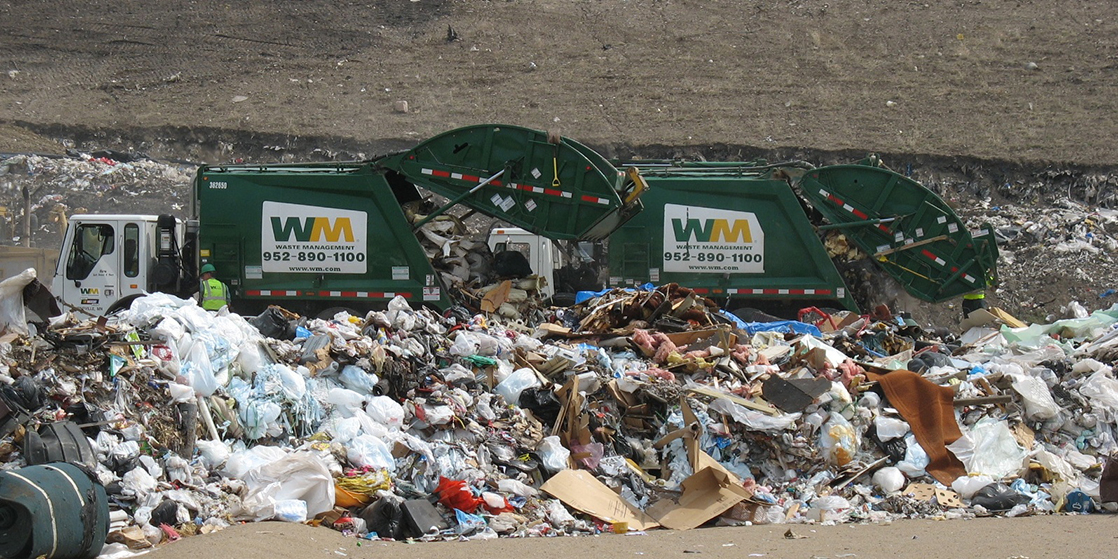 This chapter begins with Animal Digestion and Nutrition and concludes with Osmotic Regulation and ExcretionUpon completion of this module, you will be able to:
This chapter begins with Animal Digestion and Nutrition and concludes with Osmotic Regulation and ExcretionUpon completion of this module, you will be able to:- Explain the processes of digestion and absorption
- Explain the specialized functions of the organs involved in processing food in the body
- Describe the ways in which organs work together to digest food and absorb nutrients
- Describe the essential nutrients required for cellular function that cannot be synthesized by the animal body
- Describe how excess carbohydrates and energy are stored in the body
- Describe the process of digestion
- Explain the role of both the small and large intestines in absorption
- Explain how the kidneys serve as the main osmoregulatory organs in mammalian systems
- Describe how the nephron is the functional unit of the kidney and explain how it actively filters blood and generates urine
- Detail the three steps in the formation of urine: glomerular filtration, tubular reabsorption, and tubular secretion
To achieve these objectives:
- Read the Module 7 Introduction and each section in Module 7.
- Read and view the materials in the Module 7 Pressbooks chapters.
- Read Chapters 13 and 20 in the Biology 2e Textbook. Additionally, the PowerPoint slides and lecture notes have been provided to further assist you with getting acquainted with the chapters.
- Complete the: (1) Learning Objectives, (2) Review Questions, and (3) Critical Thinking Questions for each section in the chapters. The Learning Objectives for each section in the chapter should be submitted as one document.
Module Pressbooks Resources and Activities
You will find the following resources and activities in this module at the Pressbooks website. Click on the links below to access or complete each item.
-
Instructions
Complete the Learning Objectives in each section of Chapters 13 and 20. These objectives should be completed as an MS Word Document and submitted by the due dates outlined in your course syllabus. Please make sure that you save the document as : i.e. (Module 7: Chapters 13 and 20 Learning Objectives, et..)
Additionally, please make sure that you complete the Review Questions and Critical Thinking sections located in Chapters 13 and 20 Pressbooks.
Make sure settings are correct for file upload or online text, number of files allowed, notifying graders upon submission, and restrictions/conditional release.
-
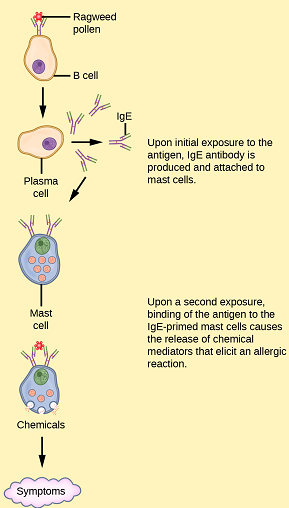
The environment consists of numerous pathogens, which are agents, usually microorganisms, that can cause diseases. Pathogens include bacteria, protists, fungi and other infectious organisms. We are constantly exposed to pathogens in food and water, on surfaces, and in the air.
Components of the immune system constantly search the body for signs of pathogens. When pathogens are found, immune factors are mobilized to the site of an infection.
In this module, students will learn about the anatomy and physiology of the immune system. Features of the immune system that are essential for survival against pathogens, such as pathogen identification, specific response, amplification, retreat, and remembrance are explored.
The IgE molecules bind to mast cells, and on secondary exposure, the mast cells release histamines and other modulators that affect the symptoms of allergy.
Image from Biology 2e from OpenStax, licensed under Creative Commons Attribution License v4.0 with the image credit modification of work by NIH.
Upon completion of this module, you will be able to:
- Describe physical and chemical immune barriers
- Explain immediate and induced innate immune responses
- Discuss natural killer cells
- Describe major histocompatibility class I molecules
- Summarize how the proteins in a complement system function to destroy extracellular pathogens
- Explain adaptive immunity
- Compare and contrast adaptive and innate immunity
- Describe cell-mediated immune response and humoral immune response
- Describe immune tolerance
- Explain cross-reactivity
- Describe the structure and function of antibodies
- Discuss antibody production
- Describe hypersensitivity
- Define autoimmunity
To achieve these objectives:
- Read the Module 8 Introduction
- Read and view the materials in the Module 8 Pressbooks book
- Read Chapter 21 in the Module 8 Pressbooks book
- Complete the Module Assignment
- Complete the Module Discussion
- This module does not have a laboratory activity
You will find the following resources and activities in this module at the Pressbooks website. Click on the links below to access or complete each item.
-

An animal’s endocrine system controls body processes through the production, secretion, and regulation of hormones, which serve as chemical “messengers” functioning in cellular and organ activity and, ultimately, maintaining the body’s homeostasis.
In this module, students will learn about the structures and functions of various hormones and endocrine glands, and how hormones regulate homeostasis within the body.
(credit: Image from Biology 2e from OpenStax, licensed under Creative Commons Attribution License v4.0 with modification of work by Muhammad T. Tabiin, Christopher P. White, Grant Morahan, and Bernard E. Tuch; scale-bar data from Matt Russell).
Upon completion of this module, you will be able to:- List the different types of hormones
- Explain their role in maintaining homeostasis
- Explain how hormones work
- Discuss the role of different types of hormone receptors
- Explain how hormones regulate the excretory system
- Discuss the role of hormones in the reproductive system
- Describe how hormones regulate metabolism
- Explain the role of hormones in different diseases
- Explain how hormone production is regulated
- Discuss the different stimuli that control hormone levels in the body
- Describe the role of different glands in the endocrine system
- Explain how the different glands work together to maintain homeostasis
To achieve these objectives:
- Read the Module 9 Introduction
- Read and view the materials in the Module 9 Pressbooks book
- Read Chapter 16 in the Pressbooks book
- Complete the following assignments for Module 9
There is NO lab associated with this Module.
Module Pressbooks Resources and Activities
You will find the following resources and activities in this module at the Pressbooks website. Click on the links below to access or complete each item.
-

As you read this passage, your nervous and musculoskeletal systems are performing several functions simultaneously. The visual system is processing what is seen on the page; the motor system controls the turn of the pages (or click of the mouse); the prefrontal cortex maintains attention. A nervous system is an organism’s control center: it processes sensory information from outside (and inside) the body and controls all behaviors—from eating to sleeping to finding a mate. The muscular and skeletal systems provide support to the body and allow for a wide range of movement. The bones of the skeletal system protect the body’s internal organs and support the weight of the body. The muscles of the muscular system contract and pull on the bones, allowing for movements as diverse as standing, walking, running, and grasping items. Injury or disease affecting either system can be debilitating.
In this module, students will learn about the anatomy and physiology of the nervous system and musculoskeletal system, including common disorders and a brief overview of the sensory systems.
(credit: Image from Biology 2e from OpenStax, licensed under Creative Commons Attribution License v4.0 with modification of work by Stuart Grout).
Upon completion of this module, you will be able to:- List and describe the functions of the structural components of a neuron
- List and describe the four main types of neurons
- Compare the functions of different types of glial cells
- Describe the basis of the resting membrane potential
- Explain the stages of an action potential and how action potentials are propagated
- Explain the similarities and differences between chemical and electrical synapses
- Describe long-term potentiation and long-term depression
- Identify the spinal cord, cerebral lobes, and other brain areas on a diagram of the brain
- Describe the basic functions of the spinal cord, cerebral lobes, and other brain areas
- Describe the organization and functions of the sympathetic and parasympathetic nervous systems
- Describe the organization and function of the sensory-somatic nervous system
- Describe the symptoms, potential causes, and treatment of several examples of nervous system disorders
- Identify the general and special senses in humans
- Describe three important steps in sensory perception
- Explain the concept of just-noticeable difference in sensory perception
- Describe four important mechanoreceptors in human skin
- Describe the topographical distribution of somatosensory receptors between glabrous and hairy skin
- Explain why the perception of pain is subjective
- Explain in what way smell and taste stimuli differ from other sensory stimuli
- Identify the five primary tastes that can be distinguished by humans
- Explain in anatomical terms why a dog’s sense of smell is more acute than a human’s
- Describe the relationship of amplitude and frequency of a sound wave to attributes of sound
- Trace the path of sound through the auditory system to the site of transduction of sound
- Identify the structures of the vestibular system that respond to gravity
- Explain how electromagnetic waves differ from sound waves
- Trace the path of light through the eye to the point of the optic nerve
- Explain tonic activity as it is manifested in photoreceptors in the retina
- Discuss the different types of skeletal systems
- Explain the role of the human skeletal system
- Compare and contrast different skeletal systems
- Classify the different types of bones in the skeleton
- Explain the role of the different cell types in bone
- Explain how bone forms during development
- Classify the different types of joints on the basis of structure
- Explain the role of joints in skeletal movement
- Classify the different types of joints on the basis of structure
- Explain the role of joints in skeletal movement
- Classify the different types of muscle tissue
- Explain the role of muscles in locomotion
To achieve these objectives:
- Read the Module 10 Introduction
- Read and view the materials in the Module 10 Pressbooks book
- Read Chapters 14, 15, and 17 in the Pressbooks book
- Complete the following activities for Module 10
There is NO lab associated with this Module.
Module Pressbooks Resources and Activities
You will find the following resources and activities in this module at the Pressbooks website. Click on the links below to access or complete each item.
-

Animal reproduction is necessary for the survival of a species. In the animal kingdom, there are innumerable ways that species reproduce. Asexual reproduction produces genetically identical organisms (clones), whereas in sexual reproduction, the genetic material of two individuals combines to produce offspring that are genetically different from their parents. During sexual reproduction the male gamete (sperm) may be placed inside the female’s body for internal fertilization, or the sperm and eggs may be released into the environment for external fertilization.
In this module, students will learn about the anatomy and physiology of reproduction, human pregnancy and birth, and development of the embryo then later fetus.
(credit: Image from Biology 2e from OpenStax, licensed under Creative Commons Attribution License v4.0 with modification of work by “cliff1066″/Flickr).
Upon completion of this module, you will be able to:- Describe advantages and disadvantages of asexual and sexual reproduction
- Discuss asexual reproduction methods
- Discuss sexual reproduction methods
- Discuss internal and external methods of fertilization
- Describe the methods used by animals for development of offspring during gestation
- Describe the anatomical adaptations that occurred in animals to facilitate reproduction
- Describe human male and female reproductive anatomies
- Discuss the human sexual response
- Describe spermatogenesis and oogenesis and discuss their differences and similarities
- Describe the roles of male and female reproductive hormones
- Discuss the interplay of the ovarian and menstrual cycles
- Describe the process of menopause
- Explain fetal development during the three trimesters of gestation
- Describe labor and delivery
- Compare the efficacy and duration of various types of contraception
- Discuss causes of infertility and the therapeutic options available
- Discuss how fertilization occurs
- Explain how the embryo forms from the zygote
- Discuss the role of cleavage and gastrulation in animal development
- Describe the process of organogenesis
- Identify the anatomical axes formed in vertebrates
To achieve these objectives:
- Read the Module 11 Introduction
- Read and view the materials in the Module 11 Pressbooks book
- Read Chapter 22 in the Pressbooks book
- Complete the following activities for Module 11
There is NO lab associated with this Module.
Module Pressbooks Resources and Activities
You will find the following resources and activities in this module at the Pressbooks website. Click on the links below to access or complete each item.
-
In the southwestern United States, rainy weather causes an increase in production of pinyon nuts, causing the deer mouse population to explode. Deer mice may carry a virus called Sin Nombre (a hantavirus) that causes respiratory disease in humans and has a high fatality rate. In 1992–1993, wet El Niño weather caused a Sin Nombre epidemic. Navajo healers, who were aware of the link between this disease and weather, predicted the outbreak. (credit "highway": modification of work by Phillip Capper; credit "mouse": modification of work by USFWS)Note the check boxes to the right that help you track your progress: some are automatic, and some are manual.Course Outcomes:
Upon successful completion of this course, the student will be able to:
- Apply biological concepts to the natural world and society
- Recognize biology as an inquiry process dependent on the scientific method and requiring critical thinking
- Interpret biological images, scientific graphs and models used to illustrate general biology concepts
- Demonstrate biological literacy through the use of standard English and appropriae citation of outside resources.
- Recognize fundamental biology principles in the areas of evolution, biological diversity, ecology, microorganisms, and anatomy and physiology of organisms.
Objectives Chapters 23-26
- Distinguish between abiotic and biotic components of the environmen
- Define biogeogrpahy
- Define global climate change
- Discuss the effects that the Industrial Revolution had on the global atmosphere
- Describe the three different patterns of population distribution
- Describe how life history patterns are influenced by natural selection
- Explain different life history patterns and how different reproductive strategies affect species' survival
- Give examples of exponential and logistic growth in natural populations
- Discuss exponential human population growth and its effects
- Explain how humans have expanded the carrying capacity of their habitat
- Give examples of predator-rey
- Give examples of symbiotic relationships
- Compare innate and learned behaviors
- Identify courtship rituals
- Identify the different biochemical cycles
- Explain the effects of habitat loss
- Explain why it is important to conserve areas
Lab Objectives Succession:
- Describe the processes of primary succession and secondary succession
- Explain what makes a community and an ecosystem different
- Describe the differences between abiotic and biotic factors
- Explain why disturbances play an important role in the progression of succession
- Define a climax community
- Describe why most areas will not make it to a climax community
- Describe the plant communities present after glacial succession and how they change the environment
- Explain the stages of succession of milk
- Describe how pH changes as milk goes through successional stages
- Explain the difference between gram negative and positive bacteria
- Draw and describe the shapes of bacteria
Lab Objectives: Ecosystem
- Define eutrophication and explain how human behaviors lead to eutrophication.
- Explain how algae blooms are detrimental to aquatic ecosystems.
- Explain how zooplankton might impact algae blooms caused by cultural eutrophication.
- Predict the effects of changes in an aquatic ecosystem using a computer model
-
IIn this module, you will be covering various topics on Ecology. This spans from Ecology and the Biosphere, Population and Community Ecology, Ecosystems, and Concervation Ecology and Biodiversity.Upon completion of this module, you will be able to:
- Define adaptation and adaptive radiatio
- Differentiate between convergent and diveregent evolution
- Identify homologous and vestigial structures
- Discuss misconceptions about the theory of evolution
- Define species and describe how scientists identify species as different entities
- Identify prezygotic and postzygotic reproductive barriers
- Differentiate between allopatric and sympatric speciation
- Define population genetics and describe how scientists use population genetics in studying population evolution
- Discuss the importance of the Hardy-Weinberg principle
- Describe the different types of variation in a population
- Differentiate between genetic drift and the bottle neck affect
- Explain how each evolutionary forces can influence a population's allele frequencies
- Explain the different ways natural selection can shape a population
To achieve these objectives:
- Read Chapter 1
- Read Chapter 1 powerpoint
- Read Chapter 2
- Read Chapter 2 powerpoint
Complete all activities within the chapters.
Lab Objectives: Evolution
- Give the geological time line and identify what organisms inhabited the particular time period
- Identify the evolution factors that relate humans and primat
- Give what supports the evidence of evolution
- Identify the factors that contribute to population genetics
- Describe how the evolution tree relates to the development of species
-
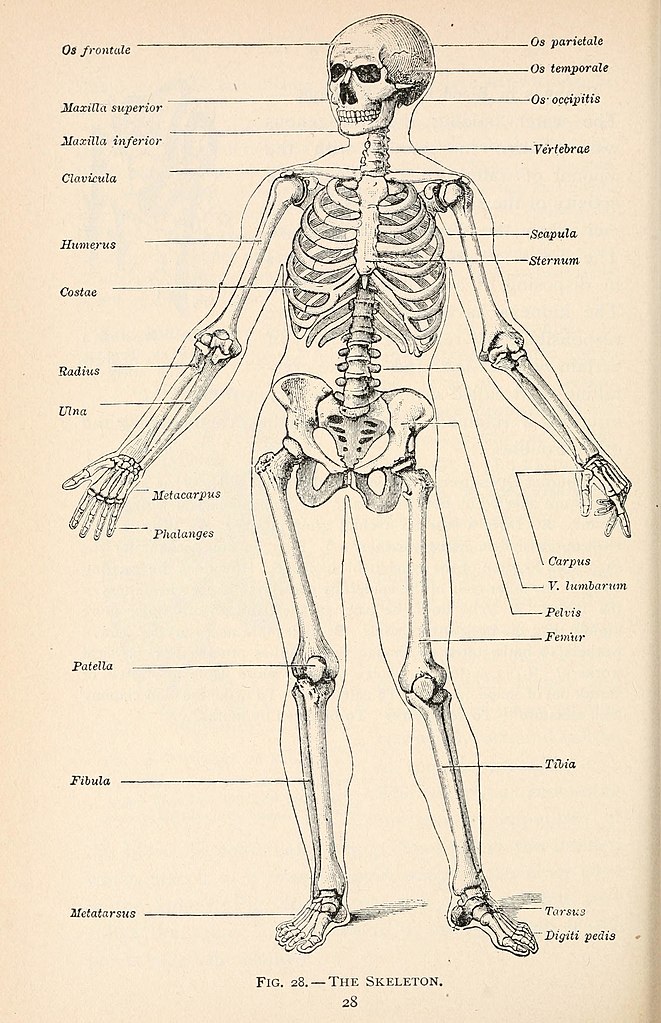
In this module you will take your midterm exam and submit your midterm assessment for this course. Read the instructions carefully and take note of any special submission guidelines.
FUTURE INSTRUCTORS WILL ADD FINAL EXAM
Upon completion of this module, you will have:
- Read and viewed the instructions.
- Scheduled your exam with the proctoring service.
- Prepared for and submitted your midterm assessment.
To achieve these objectives:
- Read and view the contents of "Exam Information and Instructions".
- Review the exam guidelines in your syllabus to make sure you are ready. Click on link and follow the instructions.
- Log in to the proctoring service and take your exam.
